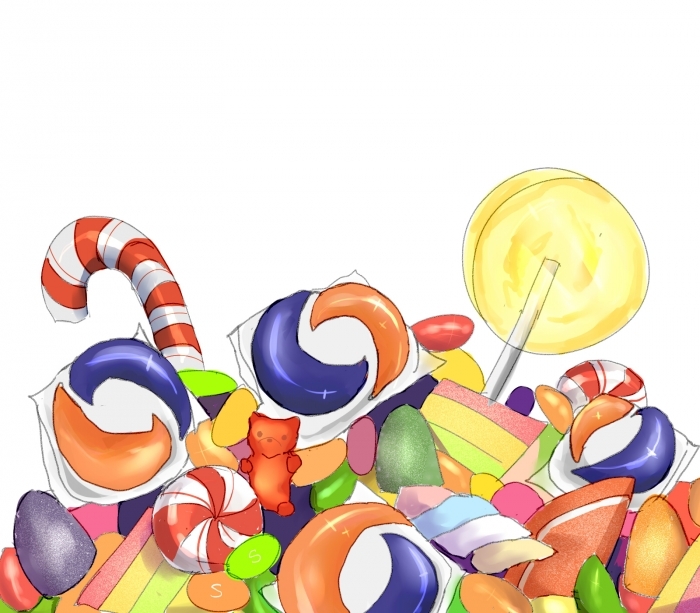In an internet age that boasts impressively dumb viral video challenges—neknominations, the cinnamon challenge, and the Kylie Jenner lip challenge, to name a few—it takes both creativity and tenacity to rise above the rest. Enter the Tide Pod trend, the YouTube phenomenon in which challengers attempt to eat chemically toxic detergent packets. The game has landed over 12,000 participants in the emergency room in 2017 alone, where Joe Schwarcz—chemistry professor and the director of the Office of Science and Society (OSS)—explained that doctors are “forced to treat teenagers who had fallen off the evolutionary ladder.” The Tide Pod challenge has become fashionable even among Canada’s supposedly best and brightest, and includes an incident at McGill’s very own Upper Residences. Nonsensical but literally bursting on the scene, the challenge’s danger can be attributed to the detergent’s complex chemical makeup.
With the detergent’s bright blue and orange pattern and lollipop-esque swirl, infants confused Tide Pods for candy long before it was an Internet gag. For the first two years after the product’s release in 2011, an average of one American child was sent to the hospital every day for mistakenly ingesting a Tide Pod. Developers at Proctor & Gamble—the multinational corporation that manufactures Tide products—began responding to this health crisis in 2015.
“They coat the outside of the tide pods with a bitter taste to discourage children from eating it,” University of Toronto Doctor of Pharmacy student Charlotte Boone explained. “That bitter taste makes children automatically feel nauseous.”
Even if you can’t get past the bitter taste and nausea, Tide Pods can do damage even before you swallow.
“When you first put [Tide Pods] in your mouth, the pH can begin to kill the cells in your mouth before it even reaches your gastrointestinal tract,” Boone said.
The damage increases after the Tide Pod is ingested, harming the body’s internal organs.
“The irritation going down your esophagus can cause you to rapidly inhale,” Boone said. “If the detergent gets into your lungs, it can even damage the mucous membrane in your lungs. As well, it can cause heartburn [….] If you’re consuming many pods, it can even perforate your esophagus, cause your stomach to ulcer, cause further heartburn, and this is when it gets really, really dangerous.”
Tide Pods are packed with over 700 chemicals, and while their constitution parallels that of regular detergent, their toxicity is compounded by a high concentration. To prevent the pods’ contents from dissolving the external packaging, Tide Pods must have a maximum water weight of seven per cent. At such high concentrations, chemicals in Tide Pods can be deadly when ingested.
“There’s hundreds of chemicals in [Tide Pods], such as quaternium-15,” Boone said. “When absorbed in the human body, [quaternium-15] can actually release formaldehyde [….] Formaldehyde will cause irritation in the respiratory tract, and skin and rash irritations, but then it can be fatal at really high concentrations.”
Moreover, scientists are still unsure of the total extent of the effects that Tide Pods can have when ingested.
“It’s not as though there’s randomized control trials to see the effects of these chemicals on the human body, because they’re not meant for consumption,” Boone said.
Scientists have numerous recommendations for how to prevent poisonings. For families with infants, they recommend liquid or powdered detergent that will deter toddlers from mistaking the pods for candy. Parents can also carry Ipecac, a drug that induces vomiting in the event that their child ingests any toxic substances. In an effort to mitigate the damage that this viral social media challenge has inflicted, YouTube has begun removing Tide Pod challenge videos to discourage viewers from participating.
As Schwarcz explained in an OSS Newsletter on Jan. 26, the Tide Pod challenge is simply not worth the medical risk.
“Biting into a laundry pod has no point,” Schwarcz wrote “Other than to demonstrate the mental shortcomings of the biter.”








